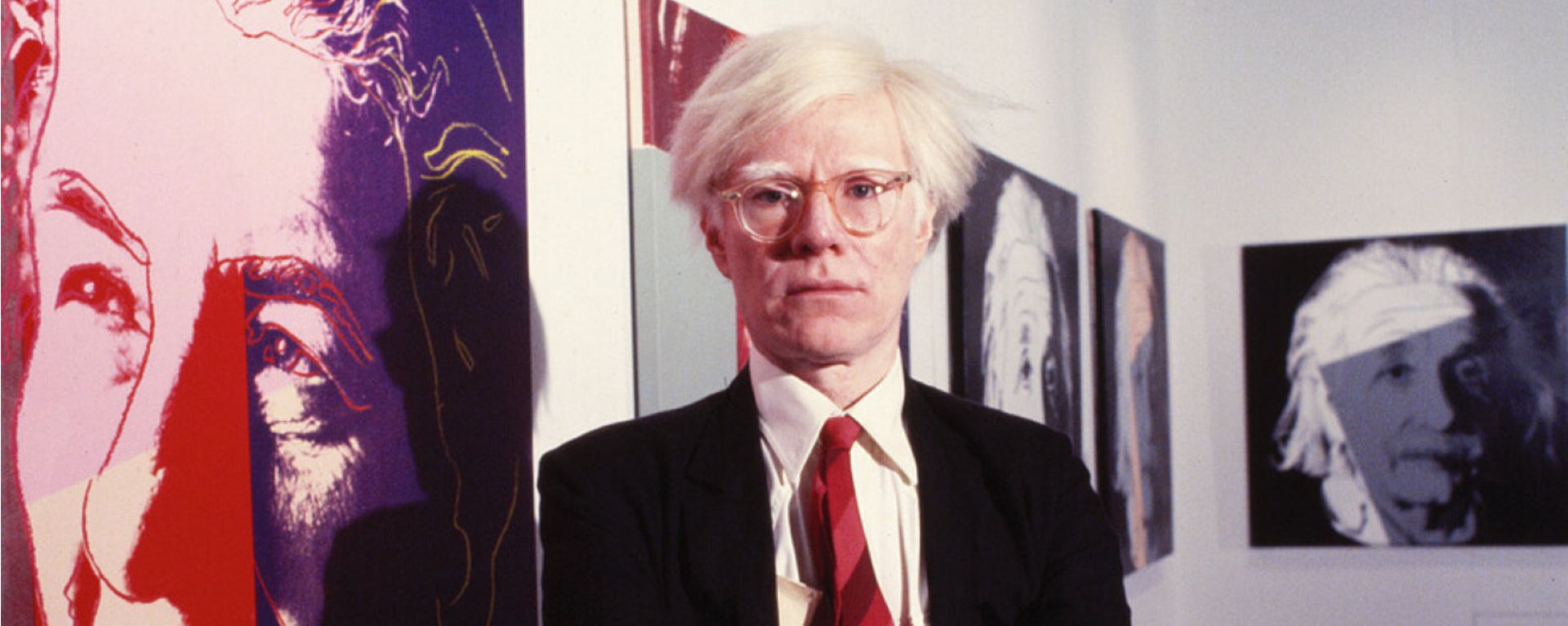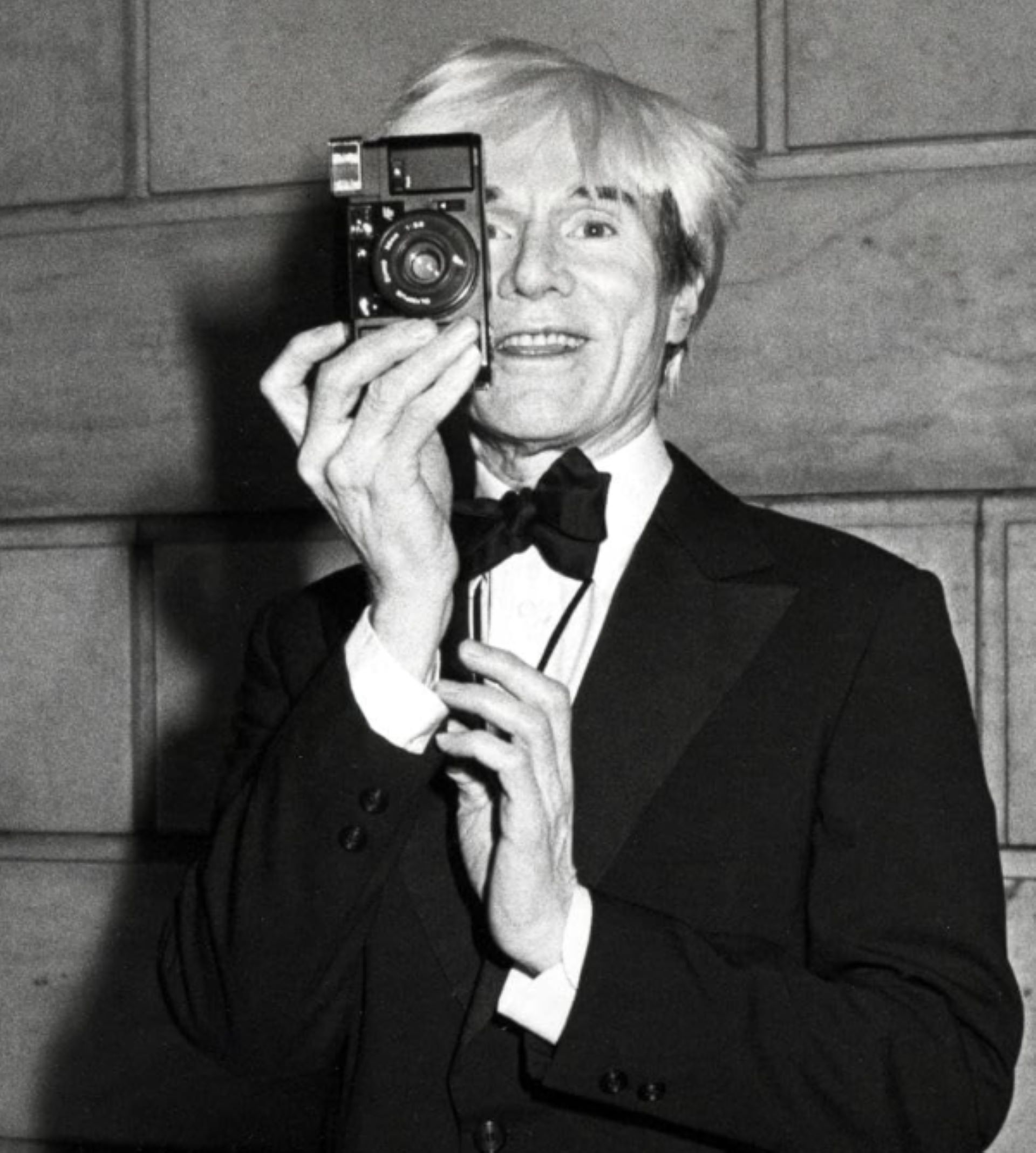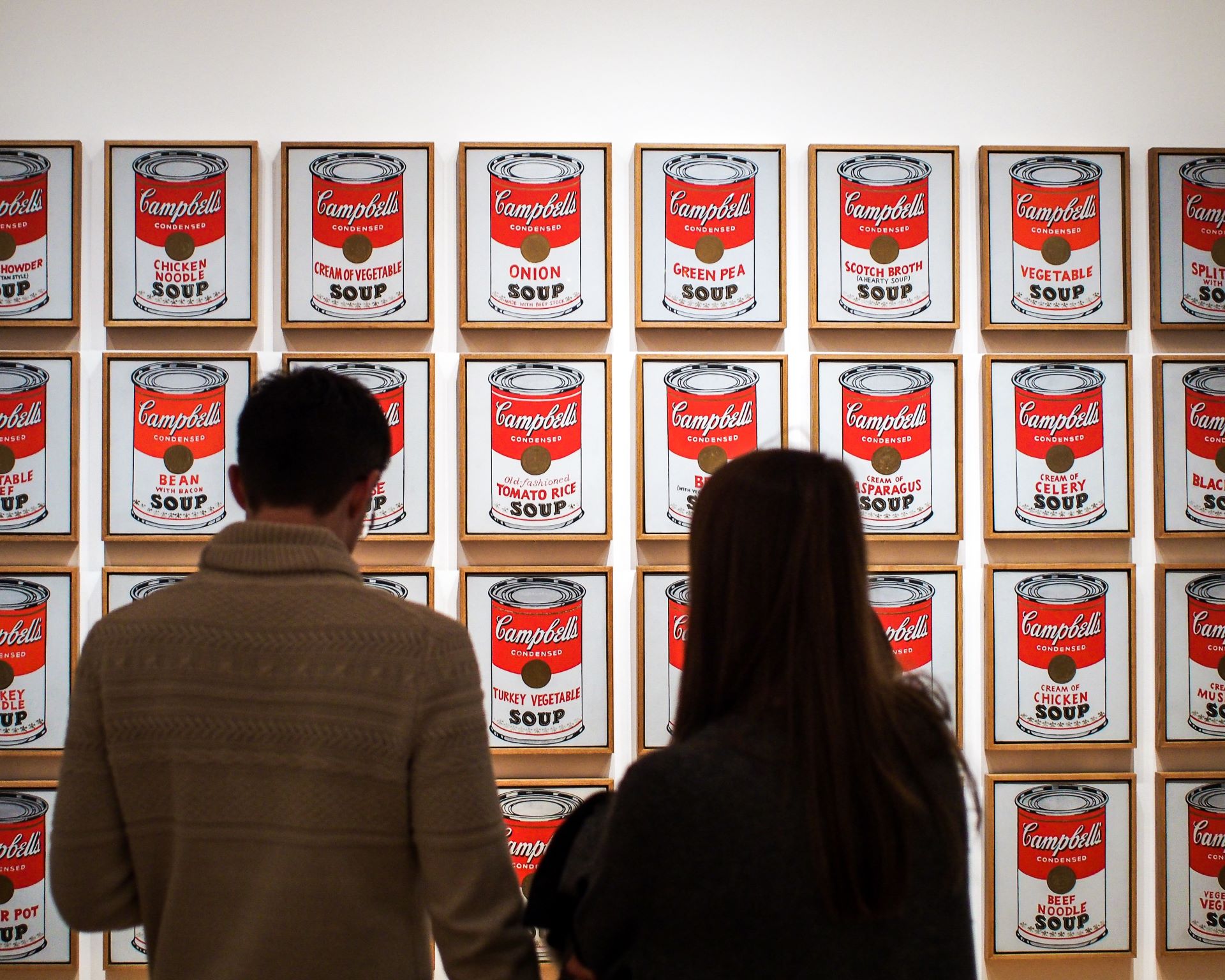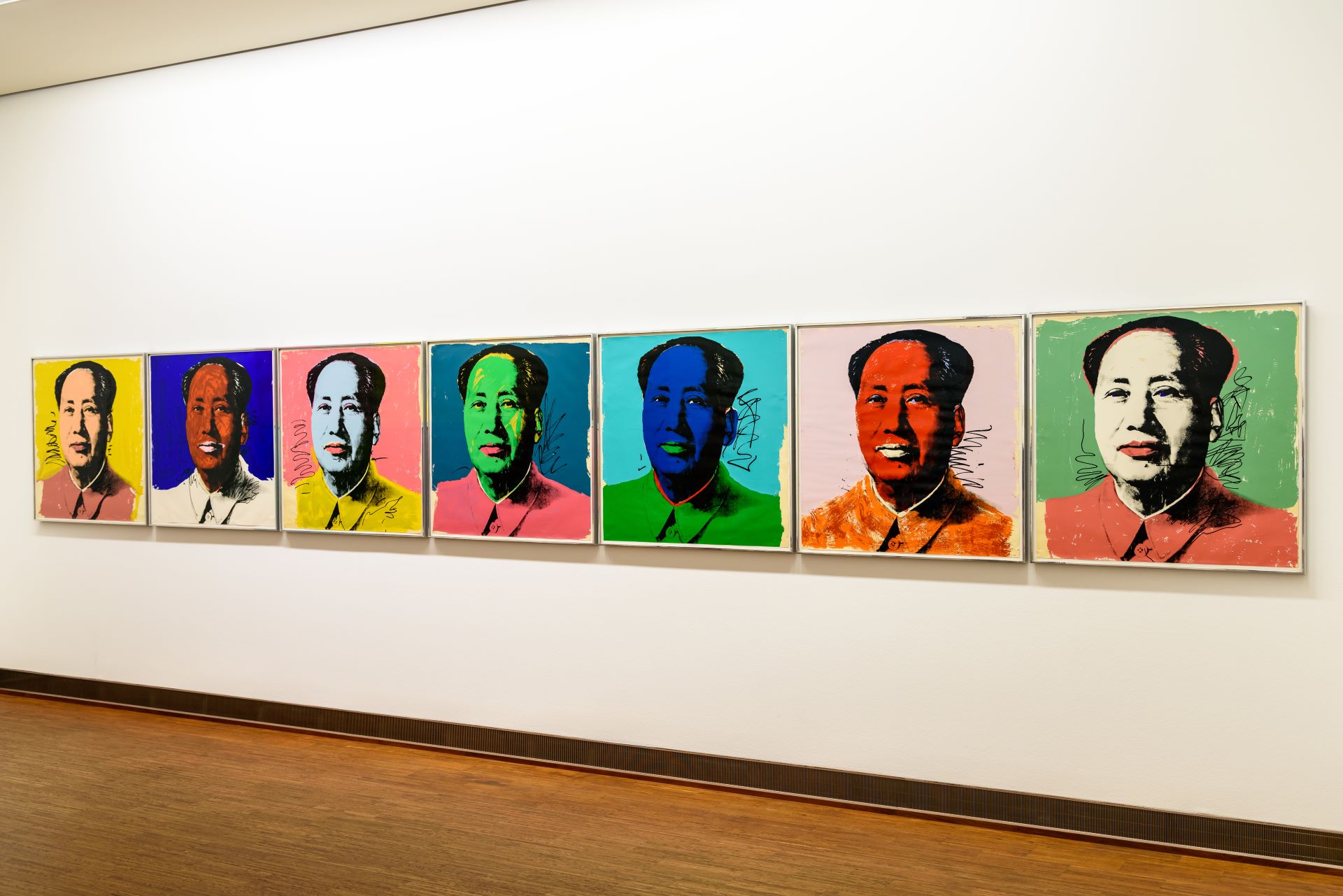
New York's art scene through the lens of Pop artist Andy Warhol
In the vibrant New York art scene, there has never been a shortage of extraordinary artists. However, one name stands out as a visionary who embraced his original vision and redefined the essence of artistic expression: Andy Warhol.
In the bustling world of 1960s New York, Warhol, with his striking silver wig and enigmatic sunglasses, became more than an artist— he was a living embodiment of the zeitgeist. From his legendary studio, The Factory emerged a revolutionary movement that would come to be known as Pop Art.
New York was the perfect location to bring Warhol’s vision into reality. Here, we’ll explore the New York art scene through the lens of Andy Warhol's art and his influence.
 Andy Warhol © IMDb
Andy Warhol © IMDbWarhol’s early Life and his move to New York
Born on August 6, 1928, as Andrew Warhola, he was the fourth child of Slovakian immigrants Julia and Andrej Warhola. Raised in the working-class neighbourhood of Oakland, young Andy's artistic inclinations began to surface early on. His love for drawing, coupled with a childhood illness that confined him to bed, served as the initial catalyst for his exploration of art. During this period, he immersed himself in Hollywood magazines and comic books, drawing inspiration from the silver screen.
After graduating from Schenley High School, Warhol pursued a degree in pictorial design at Carnegie Mellon University. It was here that he honed his skills and developed a keen interest in commercial art. Following his graduation in 1949, Warhol ventured into the bustling world of New York City, which was the epicentre of creativity and innovation.
New York, with its vibrant energy and avant-garde spirit, was the ideal canvas for the aspiring artist. In 1952, Warhol made the move to the city that never sleeps, filled with his artistic ambitions and a determination to break into the competitive realm of commercial illustration. He quickly found success as a freelance illustrator for renowned publications such as Vogue and Harper's Bazaar, setting the stage for his gradual ascent in the art world.
However, his trajectory took an unexpected turn, and the style of art by Andy Warhol changed too. The transition from commercial art to the realm of fine art became evident when he held his first solo exhibition at the Hugo Gallery in 1952. This marked a pivotal moment in his career, signalling his desire to move beyond the confines of commercialism and explore the boundaries of artistic expression.
As the 1950s unfolded, Warhol's unique approach to art began to take shape. The metamorphosis from a skilled commercial artist to a visionary provocateur was underway, laying the groundwork for changes he would later introduce to the art world. The stage was set, and the enigmatic figure known as Andy Warhol was poised to become a central figure in the evolution of contemporary art.
 The artwork Campbell's Soup Cans by Andy Warhol
The artwork Campbell's Soup Cans by Andy WarholPop Art and the Factory
In the vibrant 1960s art world, Warhol was already an established artist, with a significant influence on the art scene of New York. Andy Warhol’s Pop Art was widely known and popular. Central to Warhol's creative progress was the establishment of his legendary studio, aptly named ‘The Factory.’ Far more than a mere workspace, The Factory became a dynamic hub where creativity and innovation collided.
The Factory, functioning as both a laboratory and exhibition space, was a reflection of Warhol's ethos. It facilitated the mass production of his art and served as a gathering place for a diverse cast of characters, from fellow artists to celebrities and socialites. This eclectic mix of personalities fueled the creative energy within The Factory, giving rise to Warhol's distinct artistic voice.
Within the walls of The Factory, Warhol embraced unconventional techniques, such as silkscreen printing, that further underscored the mass-produced aesthetic of Pop Art. The studio's assembly-line approach blurred the distinction between art and commerce, challenging traditional notions of authenticity and authorship. Similarly, Warhol blurred the line between the author and his work, and rather than finding sentiment in this factor, he embraced this detachment. Only through this step was it possible to produce Pop Art with both the quantity and quality that Warhol desired to create.
Iconic artworks and series
There are a few names that everyone has heard of, and Andy Warhol is one of them. For whatever reason, you have undoubtedly come across some of his work. Throughout his life, Warhol produced some of the most iconic pop art pieces, and the prints by Andy Warhol can be seen all over the world today as well. Among his most celebrated works, the ‘Marilyn Diptych’ (1962) stands as a poignant homage to the legendary Hollywood icon. This mesmerising piece, created in the aftermath of Marilyn Monroe's tragic death, captures the essence of celebrity culture. Warhol's vibrant colour palette and repetition of Monroe's image not only immortalised the star but also reflected the relentless nature of fame itself.
 Marilyn Diptych by Andy Warhol, 1962, acrylic on canvas, 2054 x 1448 mm (Tate) © 2022 The Andy Warhol Foundation for the Visual Arts, Inc. via Wikipedia Commons
Marilyn Diptych by Andy Warhol, 1962, acrylic on canvas, 2054 x 1448 mm (Tate) © 2022 The Andy Warhol Foundation for the Visual Arts, Inc. via Wikipedia CommonsEqually iconic is Warhol's ‘Campbell's Soup Cans’ series (1962), a seemingly mundane subject that he elevated to artistic eminence. Consisting of 32 canvases, each portraying a different soup flavour, this series is a testament to Warhol's fascination with consumer culture. Through meticulous repetition, he transformed the ordinary into the extraordinary, prompting viewers to reconsider the aesthetics of everyday objects.
These iconic artworks, while polarising in their simplicity, garnered widespread attention and critical acclaim. The ‘Marilyn Diptych’ and ‘Campbell's Soup Cans’ series reshaped the landscape of modern art, sparking dialogues on the intersection of art and consumerism. Warhol's works became mirrors reflecting the societal obsessions with fame, consumer goods, and the relentless pursuit of the American Dream.
The Velvet Underground and collaborations
Throughout his career, Warhol had many interesting collaborations with artists, and one of the most significant was his work with the influential avant-garde American Rock band The Velvet Underground.
In the mid-1960s, Lou Reed and John Cale formed The Velvet Underground in New York City. Recognising the band's raw sound and subversive lyrics, Andy Warhol became their producer and manager.
Warhol's influence went beyond the recording studio; it was palpable in the band's visual aesthetic, notably seen in the iconic banana cover of their debut album, ‘The Velvet Underground & Nico.’ Their collaboration reached its zenith in the immersive multimedia performances of the Exploding Plastic Inevitable, a concert-cum-multimedia art event.
However, creative tensions arose, driven by differences in artistic direction and the clash between Warhol's experimental approach and commercial expectations within the music industry. By 1967, the Velvet Underground decided to part ways with Warhol. The reasons behind this split were multi-faceted, encompassing both creative and managerial disparities. In retrospect, the Warhol-Velvet Underground collaboration left an indelible mark on the evolution of alternative rock.
 Mao (Mao Tse Tung) by Andy Warhol
Mao (Mao Tse Tung) by Andy WarholExhibitions and tributes
Through his work, it's safe to say that Warhol understood the modern consumer culture better than anyone else in the world. He was surely the person who could even understand pop culture and mass media trends of the future. After all, he was the one with the famous prophecy: “In the future, everyone will be famous for 15 minutes.” There is still a lot to discover in the work of a person who re-invented the idea of what art could have been, and that is why it’s important to go back to the dynamic scene of New York from the focus of Warhol’s art.
New York, the epicentre of Warhol's creative odyssey, hosts numerous events that celebrate his enduring influence on the city's art scene. These tributes go beyond traditional gallery displays, often manifesting in public installations, discussions, and multimedia presentations. The vibrant spirit of Warhol is not confined to the hallowed halls of museums; it spills into the streets, embedding itself in the cultural fabric of the city that both shaped and was shaped by the artist. Many of Andy Warhol's most famous works are housed in prominent museums and collections worldwide, ensuring their accessibility. The Museum of Modern Art (MoMA) in New York City boasts an extensive collection, including iconic pieces such as ‘Marilyn Diptych,’ ‘Gold Marilyn Monroe,’ and ‘Campbell's Soup Cans.’
The Andy Warhol Museum in Pittsburgh, his hometown, stands as the largest museum in the United States dedicated to a single artist. This institution houses an extensive collection of Warhol's works, personal artefacts, and archival materials.
Internationally, the Tate Modern in London holds several notable Warhol pieces, including ‘Self-Portrait’ and ‘Eight Elvises.’ The Art Institute of Chicago and the San Francisco Museum of Modern Art (SFMOMA) also house significant works, contributing to the widespread dissemination of Warhol's artistic legacy.
Meanwhile, the Andy Warhol Foundation has continued to support the work of experimental visual artists since 1987.
Private collections and auction houses also play a role in showcasing Warhol's works. Given the artist's prolific output and continued influence, his pieces frequently appear in major art auctions, attracting both public and private collectors.
To understand the intricacies of our world and its mechanisms, we can’t overlook the work of Andy Warhol. This visionary artist, possessing the keenest foresight into the future, left behind a legacy that resonates seamlessly with both our present and the future, as his work transcends his era, leaving a lasting mark on the constantly evolving world of contemporary art.
For a deeper understanding of the art world's ever-evolving landscape, explore these four extraordinary artworks and how their staggering auctioned prices.
